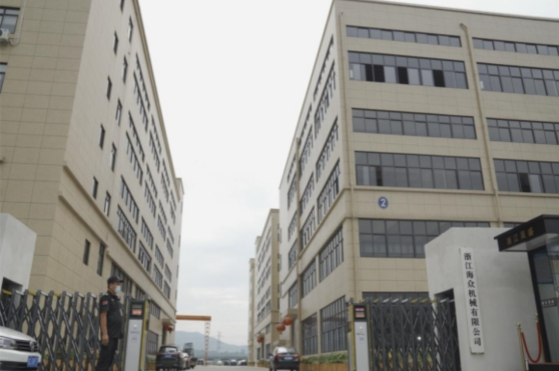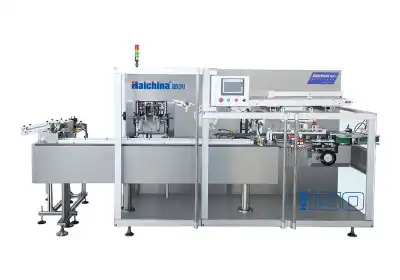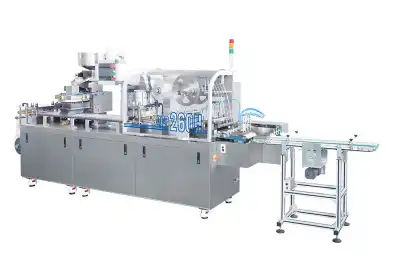How Pillow Packing Machines Work: From Feeding to Sealing?
Pillow packing machines are sophisticated devices that automate the process of packaging products in pillow-shaped bags. These versatile machines operate through a series of coordinated steps, transforming raw materials into neatly sealed packages. The process begins with feeding the product and packaging material into the machine, followed by forming the package around the product, and finally sealing it securely. This efficient system combines precision engineering with high-speed operation, allowing for rapid and consistent packaging of various items, from food products to non-food commodities. Understanding the intricacies of how these machines function can provide valuable insights for businesses looking to optimize their packaging processes and improve overall productivity.

The Fundamentals of Pillow Packing Machines
Components and Structure
Pillow packing machines are composed of several key components working in harmony. The main structure typically includes a sturdy frame that houses the various mechanisms. Essential parts include the film roll holder, forming collar, vertical seal bars, horizontal seal bars, and a conveyor system. The film roll holder securely positions the packaging material, while the forming collar shapes it into a tube. Seal bars create airtight closures, and the conveyor system moves products through the machine efficiently.
Types of Pillow Packing Machines
There are various types of pillow packing machines designed to meet different packaging needs. Vertical form-fill-seal (VFFS) machines are popular for their versatility and compact footprint. Horizontal flow wrappers excel at handling delicate or irregularly shaped items. Continuous motion machines offer high-speed operation for large-scale production, while intermittent motion machines provide greater flexibility for smaller runs or frequent product changes. Each type has its unique advantages, catering to specific industry requirements and product characteristics.
Advantages of Automated Packaging
Automated packaging using pillow packing machines offers numerous benefits. These include increased production speed, improved consistency in package appearance, reduced labor costs, and minimized product waste. The machines can operate continuously, leading to higher output and efficiency. They also ensure uniform package sizes and sealing quality, enhancing product presentation and shelf life. By reducing human intervention, these machines minimize the risk of contamination, making them ideal for industries with strict hygiene standards, such as food and pharmaceuticals.
The Step-by-Step Process of Pillow Packing
Material Feeding and Preparation
The pillow packing process begins with the careful loading of packaging film onto the machine. High-quality films, often made from materials like polypropylene or polyethylene, are used to ensure package integrity. The film is threaded through a series of rollers that maintain proper tension and alignment. Simultaneously, the product to be packaged is prepared and loaded into the machine's hopper or feeding system. Advanced machines may incorporate automated product sorting and measuring systems to ensure accurate portioning.
Film Forming and Product Insertion
As the film moves through the pillow packing machine, it encounters the forming collar. This specialized component gradually shapes the flat film into a tubular form. The edges of the film are brought together and sealed vertically, creating a continuous tube. Products are then precisely timed to drop through this tube, with each item separated by a predetermined distance. This crucial step requires precise synchronization between the film movement and product release to maintain consistent package sizes and prevent jams.
Sealing and Cutting
The final stage involves sealing the packages and separating them into individual units. Horizontal seal bars clamp the film at regular intervals, creating the top seal of one package and the bottom seal of the next simultaneously. These seals are typically heat-activated, melting the film layers together to form a strong, airtight closure. Immediately after sealing, a cutting mechanism separates the packages. Some advanced machines incorporate additional features like gas flushing for extended product shelf life or easy-open notches for consumer convenience.
Optimizing Performance and Maintenance
Calibration and Quality Control
Achieving optimal performance from a pillow packing machine requires meticulous calibration and ongoing quality control. Regular checks and adjustments ensure that all components are functioning correctly and in sync. This includes verifying the tension of the film, the temperature of sealing bars, and the timing of product drops. Many modern machines incorporate sensors and computer controls that continuously monitor these parameters, allowing for real-time adjustments. Implementing a robust quality control system, including regular package integrity tests and visual inspections, helps maintain high standards and minimize defects.
Routine Maintenance Procedures
Proper maintenance is crucial for the longevity and efficiency of pillow packing machines. This involves regular cleaning of all components, particularly those in contact with the product or packaging material. Lubrication of moving parts, inspection of wear items like sealing bars and cutting blades, and timely replacement of consumables are essential. Creating a comprehensive maintenance schedule and adhering to manufacturer recommendations can prevent unexpected downtime and extend the machine's lifespan. Training operators in basic troubleshooting and maintenance tasks can also contribute to smoother operations.
Troubleshooting Common Issues
Even well-maintained pillow packing machines may encounter occasional issues. Common problems include inconsistent seal quality, misaligned packages, or irregular product distribution. Addressing these issues promptly is crucial to maintain production efficiency. Operators should be trained to identify signs of potential problems, such as changes in machine sound or package appearance. Developing a troubleshooting guide that outlines common issues, their potential causes, and step-by-step solutions can empower operators to resolve minor problems quickly. For more complex issues, having a relationship with a reliable service provider ensures prompt expert assistance when needed.
Conclusion
Pillow packing machines represent a pinnacle of packaging automation, offering a seamless process from product feeding to final sealing. Their ability to rapidly produce consistent, high-quality packages makes them indispensable in various industries. By understanding the intricacies of their operation, businesses can maximize efficiency, reduce waste, and ensure product integrity. As packaging technology continues to evolve, pillow packing machines are likely to become even more sophisticated, incorporating advanced features like IoT connectivity and AI-driven optimization, further enhancing their value in modern manufacturing and packaging operations.
Contact Us
For more information about our pillow packing machines and how they can benefit your business, please contact us at [email protected]. Our team of experts is ready to help you find the perfect packaging solution for your needs.
References
Johnson, R. (2022). Advanced Packaging Technologies: A Comprehensive Guide.
Smith, A. & Brown, B. (2021). Pillow Pack Machines: Innovations and Applications.
Technical Packaging Solutions Quarterly. (2023). Trends in Automated Packaging Systems.
Lee, C. (2020). Maintenance Strategies for Packaging Equipment Longevity.
International Journal of Packaging Technology. (2022). Comparative Analysis of Vertical and Horizontal Form-Fill-Seal Machines.
Global Packaging Industry Report. (2023). Market Trends and Technological Advancements in Packaging Machinery.

Submit the form now to get a unique quote!

ZHEJIANG HAIZHONG MACHINERY CO., LTD.
Popular Blogs
-
 Successful caseProducts and services
Successful caseProducts and servicesHow to Train Employees to Operate a Bottle Packing Machine Effectively?
-
 Successful caseIndustry insights
Successful caseIndustry insightsThe Blister Packaging Process: A Complete Step-by-Step Guide
-
 Successful caseComparative analysisIndustry insights
Successful caseComparative analysisIndustry insightsWhat Type of PVC Is Best for Blister Packing Machines?